- Empty cart.
- Continue Shopping
Fern Plant | Buy Fern Plants online
₨200.00
Fern Plant: A Concise Guide
The Fern Plant are the intriguing plants that can cause you to pause whenever they appear in the woods or in a window of a neighbor’s. They have complex leaves and a story which spans millions of years, ferns are able to provide a hint of elegance and mystery in any space.
In this piece in this article, we’ll get familiar with Ferns, their characteristics, how they tick, and the ways they can be nurtured inside your home. The article will cover the basic aspects of what a”fern” is and how you can care for the plants, and then include some tips that will make the ferns a standout for your home design.
What Exactly Is a Fern plant?
The fern plant is a plant that isn’t concerned with flowers or seeds, which could sound unorthodox, doesn’t it? They instead reproduce through the spores. They’ve survived longer than many could imagine living in abundance since before dinosaurs ruled on the Earth.
There is a lot to think about that is it that makes ferns stand out from other indoor plants. It’s because they are the group of plants referred to as pteridophytes. They are not flowering, and have no seeds. They’re the ones that have survived and have adapted to various habitats over the course of thousands of years. They’re a great option for indoor gardening.
Their leaves, also known as”fronds” (oops there’s that word! ) are available in many dimensions and shapes, which add their appeal. Ferns range from small delicate, delicate plants to massive beautiful ones. They’re extremely versatile, which makes them the most sought-after those who appreciate the greenery of the prehistoric touch.
Different Types of Fern plant You Can Grow Indoors
If you’re unfamiliar with plants, the wide range of options can be daunting. However, don’t worry. I’ll show you some most popular options that work well inside.
- Boston Fern (Nephrolepis exaltata Bostoniensis): This classic plant is famous for its beautiful long, arching fronds. It is an essential part of many houses. It flourishes in humid areas So think bathrooms or kitchens.
- Maidenhair Fern (Adiantum): With the delicate feathery leaves it appears as if it’s floating. It likes a little indulgence with high humidity and indirect sunlight.
- Bird’s nest Fern (Asplenium Nidus): This fern is distinctive with its large curly leaves. It’s more accepting of low humidity, but prefers bright, well-lit areas without the direct light of.
- Staghorn Fern (Platycerium): Unique in its appearance The fern can be placed on a wood board, and then hung on the wall. This makes it a live work of artwork.
There are many choices to help you get started. Every type of product is unique and has distinct preferences for maintenance which is why you must pick the one that best suits your needs and your home.
Understanding Fern plant Care Basics
It can be difficult at first, but once you’ve figured out what they require they’re like having the fern that needs a little care and the proper conditions for them to flourish.
Here are a few basic suggestions to help keep your ferns healthy and happy:
- Light: Most ferns prefer indirect light. Imagine the sun dappled you’d see beneath a canopy tree. Insufficient sunlight could cause the leaves to burn.
- The water They prefer that their soil remain damp (but not saturated). Take a look at the top inches of soil. If it’s dry, you need to add water.
- Humidity They love humidity. The kitchen and bathroom are the ideal places. If this isn’t possible you can consider installing the possibility of a humidity tray or smaller humidifier near by.
- temperature: A majority of the ferns happy in temperatures that range from 65°F and 75°F. Be sure to keep them away from heating sources or drafts.
Keep these tips in mind can go a long way to ensure that your ferns remain flourishing and healthy.
Potting and Soil Tips for Fern plant
If it’s time to plant and potting, fern plant can have some choices. They like soil with good drainage that helps to prevent root rot which is common that can occur if they’re left in the water.
A simple step-by-step guide for the process of potting your fern
- Select the right pot: A pot with drainage holes is vital. The holes allow excess water to be drained away, thus preventing the roots from becoming soggy.
- Soil Mix An ideal potting mixture for ferns is made up of perlite, peat, as well as pine bark. The combination provides the perfect amount of moisture retention as well as drainage.
- Repotting The ferns aren’t afraid of being somewhat rootbound However, if there are roots sprouting out of your pot, or the soil is drying out excessively, it’s an ideal time to plant again. It is best to do it during the spring.
Keep in mind that ferns don’t like the idea of being disturbed frequently and therefore, you should keep repotting to the minimum, unless absolutely necessary.
Handling Common Fern Problems
Even the most knowledgeable gardeners face problems every at times. For ferns, some difficulties are more prevalent than others. But don’t be concerned, we’ve got you covered.
- Browning Leaves It could be the result of a lack of humidity or uneven irrigation. It is important to ensure that the fern doesn’t get located near to a source of draft It is also a good idea to mist the fern every now and then.
- Pests The ferns are a magnet for insects such as spider mites or mealybugs. The gentle application of insecticide soap or water typically does the trick.
- Leaves that are yellowing: This often indicates the overwatering. Make sure the soil is moist and make sure your planter is properly drained.
Monitoring the leaves on your fern’s flora can reveal clues to what’s needed, which makes it simpler to tackle the issues quickly.
The incorporation of Ferns to your home Decor
They’re not just plants and are a fashion statement. Their greenery and lush foliage can completely transform your space and add some of the outdoor within your house.
Here are a few ideas on how to include ferns in the decor of your home:
- HANGING Baskets: Fern plant look amazing in hanging baskets, especially for areas with a high ceiling. It can add the appearance of a space with layers.
- Bathroom Oasis: If you’re fortunate enough be in a bathroom with daylight, you can place your fern next to the windows. Showers’ humidity can keep it content.
- Living Art Install a Staghorn plant on wood for an original wall art. This is like having a live sculpture.
- Table Centerpieces: A small fern placed in a pot of decorative design is a stunning table centerpiece table or coffee table.
Try different locations to determine what will work best in your house’s design and the requirements of your fern.
Ferns and Feng Shui
For those who are interested in feng-shui the fern plant could be calming in your living space. They are believed to help bring harmony particularly in areas where the space feels crowded and overcrowded.
Here are some suggestions for how to use ferns for feng shui:
- The location is either East or Southeast: These directions have been linked to wellbeing and health. Healthy ferns can improve these regions.
- Beware of Spaces that are Cluttered: Make sure your plant isn’t in an overcrowded zone. Spaces that are open allow energy to move easily.
- Combine natural Elements: Combining ferns with other elements of nature such as wood, stones or even rocks can boost their energy and positive vibration.
Feng Shui principles are focused on balance, adding the fern will definitely give a peaceful, relaxing atmosphere to your home.
Fern Propagation: Growing Your Collection
If you’re awestruck by your Fern plant (and is there anyone who would be blamed? ) It’s possible to give it a go with propagation. The fern can be propagated by division, or through the growth of the spores. Each has distinct attraction.
Division
The simplest way to do this is division that involves dividing an existing plant into smaller segments. The following is the method to accomplish it:
- The fern should be removed from the container and gently shake out the soil.
- Find natural divisions within the plant. They are typically clusters of fronds that have their roots.
- Make use of a knife that is clean to cut these pieces.
- Place each section inside its own pot and cover it using fresh soil.
Spores
The process of growing ferns using spores can be more time-consuming, however it is rewarding. Here’s a quick rundown:
- Take spores off the beneath the fronds of mature. They look like small brown dots.
- The spores should be placed on the paper, then move them into a container that has a sterile mix of potting.
- The container is covered with plastic wrap in order to keep humidity. Then place it under indirect light.
- In the next few weeks you will see ferns that are tiny gametophytes (they are like miniature hearts in green) get started to expand.
- After they have matured, you can transplant them to individual pots.
Propagation can be a great option to increase the size of your fern’s circle and to make them available to other friends!
Creating a Fern-Friendly Environment
If you want to truly indulge your ferns, you should consider making a space that replicates the natural environment. That doesn’t mean you have to turn your house into a forest However, just a few adjustments will make a huge change.
- Think about a humidifier A tiny room humidifier will keep the the humidity level ideal for your Ferns.
- Group plants together: Placing your ferns alongside other plants may make a microclimate that has greater humidity.
- Use pebble tray: Place a tray on top of it with pebbles and water, then set your fern’s pot over the top. The water will evaporate, it raises the humidity of the plant.
- Mist regularly: Misting ferns can assist in keeping moisture levels at a minimum, especially in dry environments.
If you make these changes by making these adjustments, your ferns will grow and show their best.
Final Thoughts
Ferns aren’t only remnants of the past, they’re incredibly versatile, gorgeous and quite simple to maintain after you’ve figured out what they require. They can be used to add greenery to your living space to trying out the propagation process, ferns provide a rewarding experience when it comes to plant parenting.

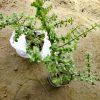


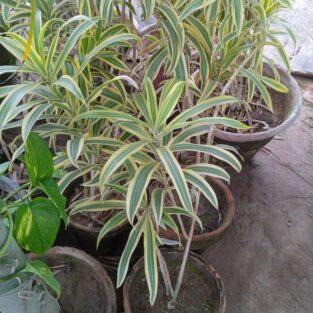

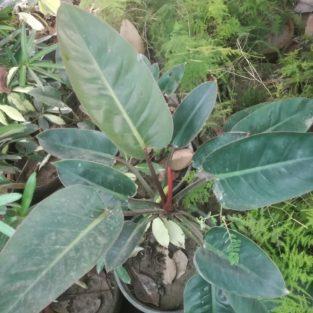
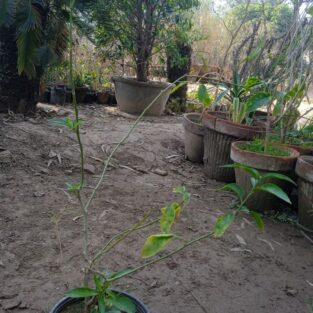

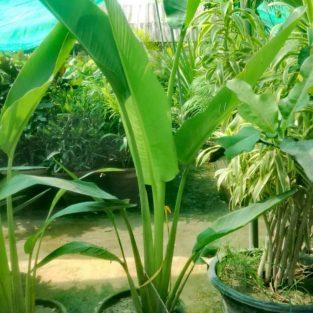
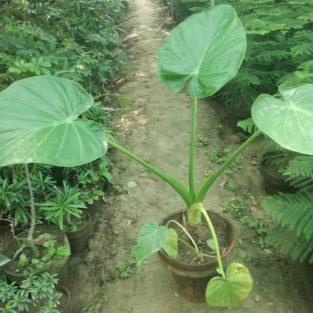
Reviews
There are no reviews yet.